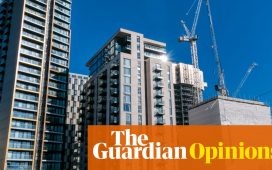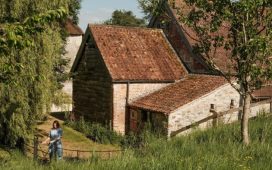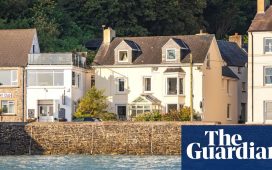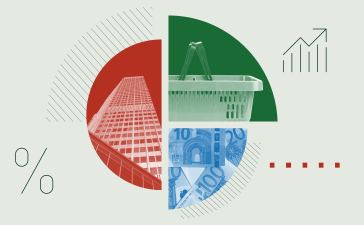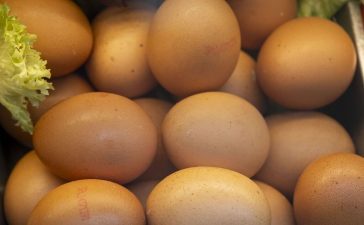Few pockets of Manhattan are as alive as Lenox Avenue near 120th Street. On warm summer evenings, you might find a joyful drumming circle filled with percussionists of all ages uniting for a sunset session. Or a semi-formal block party set against a backdrop of postcard-perfect town houses near Marcus Garvey Park. Or a fashion show by the local label Baayfall Fashion, whose Dakar-born designer Fallou Wadje closed down an entire street this past summer to present her wares accompanied by a live jazz crooner.
This is Harlem in 2023, a neighbourhood of vibrant contrast and contradictions — where multimillion-dollar brownstones sit alongside affordable housing schemes and professional (often white) newcomers share space with the most historic urban African-American community in the US. As architect Thomas Gluck, who both lives and runs his business GLUCK+ in the district, describes it, “Harlem is one of the rare New York neighbourhoods that still feels genuinely urban and truly integrated and diverse.”
It’s been 100 years since now legendary poets such as Langston Hughes and Blues singers like Bessie Smith helped sear this Upper Manhattan quarter into America’s cultural consciousness during Harlem’s fabled Renaissance. A century on, Harlem has solidified itself within New York City’s real estate hierarchy — even as it struggles to navigate larger economic headwinds that are hitting the neighborhood harder than other parts of the city.
Harlem — which rises from Central Park North for nearly 50 blocks — is large and varied. On its northern, less affluent extremes, there are imposing red-brick apartment buildings along broad avenues rattled by the charge of elevated subway trains heading towards Washington Heights and the Bronx. On its far western fringes, the focus is on Columbia University’s massive new Manhattanville campus, whose myriad academic structures — including a new $600mn business school — will occupy nearly 7mn square feet over five square blocks when complete.

Just below is elegant Morningside Heights (which borders Harlem and the Upper West Side), with its namesake park, while the spacious town houses throughout Hamilton Heights in Harlem’s centre have long served as a refuge for the city’s sizeable black middle class. And at its base, from the 125th Street retail corridor downward, is South Harlem, which includes that cultural buzz along Lenox Avenue as well as bucolic Central Park North. It is also now home to the glass-and-steel facades of the district’s modest boom in high-end rental and condominium development.
There have been significant changes in Harlem’s demographics in recent decades. According to New York University’s Furman Center for Real Estate and Urban Policy, Harlem’s African-American population shifted from roughly 77 per cent to 42 per cent between 2000 and 2021. During the same period, the white population rose from 2 per cent to 17.5 per cent — while its Hispanic population has increased by two-thirds and now stands at 27 per cent.

The newcomers, as is so often the case in New York, have been a mix of young professionals in search of affordable starter rentals and families priced out of the rest of Manhattan looking to own a home. “Harlem might not be as overtly artsy or edgy as parts of Brooklyn,” observes longtime resident Karl Franz Williams, owner of the 67 Orange Street cocktail bar on Frederick Douglass Blvd. “Harlem has a mature vibe,” he says. “People move to Harlem — and stay in Harlem.”
New development — along with coveted Harlem town houses — are helping to keep them there. Notable arrivals include 145 Central Park North, Circa Central Park, 10 Lenox, the Vandewater at 543 West 122nd Street and 111 Central Park North, which kick-started the shift into prime real estate nearly two decades ago and was immortalised in the video for Jay-Z’s “Blue Magic”.
Next year, the mixed-use Ray Harlem will open on East 125th Street and include a new home for the National Black Theatre as well as 222 rental units, many earmarked for the “affordable housing” programmes that have become flashpoints between developers and local politicians across the neighbourhood, where low-priced homes have never been so badly needed.

Although still a modest component of Harlem’s overall housing stock, the new developments have helped boost area prices — even as Harlem continues to offer significant value compared with the rest of Manhattan. How high can those prices go? In August 2022, actors Neil Patrick Harris and David Burtka sold their 8,000 sq ft town house for $6.99mn, a neighbourhood record and nearly twice the $3.6mn they paid for it in 2013.
A nearby town house with an indoor swimming pool and two-car garage hit the market for just under $6mn in September, while a 1,757 sq ft penthouse condo at 145 Central Park North is on the market for $4.75mn and a four-bedroom penthouse at 111 Central Park North is now listed at $14.95mn.
Despite the seven (sometimes eight) figure deals, the median Harlem sales price was just $627,500 in the third quarter of 2023, according to Jonathan Miller, of real-estate appraisal company Miller Samuel. Although that figure represents a 5 per cent year-on-year increase, it is still far lower than the $1.15mn for Manhattan as a whole. Harlem sales figures have also appreciated at a faster pace over the past decade than the rest of Manhattan — with median sales prices up 41 per cent between the third quarter of 2013 and third quarter of 2023, 10 percentage points more than the Manhattan average.

But the market is struggling with high interest rates. In the past year, sales numbers in Harlem have declined markedly — down 32 per cent compared with 23 per cent across Manhattan. It’s the largest decline of any New York City submarket, according to a report from the Corcoran Group. While Miller suggests the slowdown is consistent with overall trends nationwide, the higher number reflects many of the unique aspects of the Harlem market — where some 85 per cent of all residents rent, according to Furman Center at New York University, nearly half of whom in homes the city considers “affordable”.
So far this year, 29 per cent of sales in Harlem have been under $500,000 — compared with 13 per cent across Manhattan, according to real estate analytics company UrbanDigs. “Finding a studio for $500,000 is a challenge in most other New York City neighbourhoods,” says its founder John Walkup. “That’s not the case in Harlem.”
Buyers at these lower price points — who typically require a mortgage — have been far more impacted by interest rate spikes than those with deeper pockets, says Miller. Harlem specialist Julia Boland of the Corcoran Group adds that the rate increases — (the average 30-year mortgage rate is currently 7.91 per cent, up from 7.32 per cent in October last year) — have directly affected not just declining sales numbers, but also a decline in availability.
“Sellers appear more reluctant to put their homes on the market right now,” she says. “They already have great mortgage rates and would rather hold on to their homes, even if they want to trade up to larger spaces,” she adds. The result: a mere 18 condo contracts were signed in Harlem during the third quarter of this year, down from 46 just three months earlier, according to Boland.

Lane Rettig, a crypto-focused software developer and native New Yorker, purchased a three-bedroom, $3.5mn condo at 145 Central Park North in late 2021 after renting for years across Manhattan.
Although Rettig knew he and his wife wanted Central Park access, Harlem had not initially been on their radar and they were mostly looking on the Upper West Side. “In many ways we initially chose the building more than the neighbourhood,” he says of the development, which offers park views from each of its 37 units. Since moving in, the couple have welcomed a son and found a surprisingly tight-knit community, including many young families like their own.
“We know all of our neighbours on a first-name basis, which is something that has never happened in all of my years in New York,” he says. Although Rettig says the family may begin spending time in California to be closer to his wife’s parents, they view Harlem as their permanent home. “We can’t see us living anywhere else,” he says.
At a glance
-
Harlem landmark the Apollo Theater is undergoing a major expansion, the Studio Museum of Harlem is building an entire new home and the $150mn update of northern Central Park’s Harlem Meer, a man-made lake, is nearing completion.
-
Amid declining crime rates following New York’s Covid-era surge, violent crime has come down in Harlem this year through October 22; with burglaries down 37.7 per cent and transit crimes down 31 per cent, according to the NYPD.
-
Long the domain of small-scale, independent retailers, Harlem will soon also be home to big retail chains such as Target and Trader Joe’s, while the upscale Renaissance New York Harlem Hotel debuted in September.
On the market

Condominium, West 119th Street, $1.25mn
A 1,625 sq ft apartment with three bedrooms in south Harlem, half a block east of Morningside Park. The property has its own laundry room and hardwood floors, and is in a 1930s building which is pet-friendly. For sale with Corcoran.

House, Hamilton Heights, $1.595mn
A four-storey house with 3,000 sq ft of living space including up to five bedrooms and two bathrooms. Built in 1899, the house retains period features such as the hardwood floors, joinery, tin ceilings, fireplaces and brass fittings. On the market with Compass.

New home, 145 Central Park North, about $3.647mn
A four-bedroom, three-bathroom home in a 2,238 sq ft layout described as a “town house” by the developers. The building has a doorman, children’s play room, pet spa, gym and roof terrace. Available through 145cpncondos.com.
Find out about our latest stories first — follow @FTProperty on X or @ft_houseandhome on Instagram


